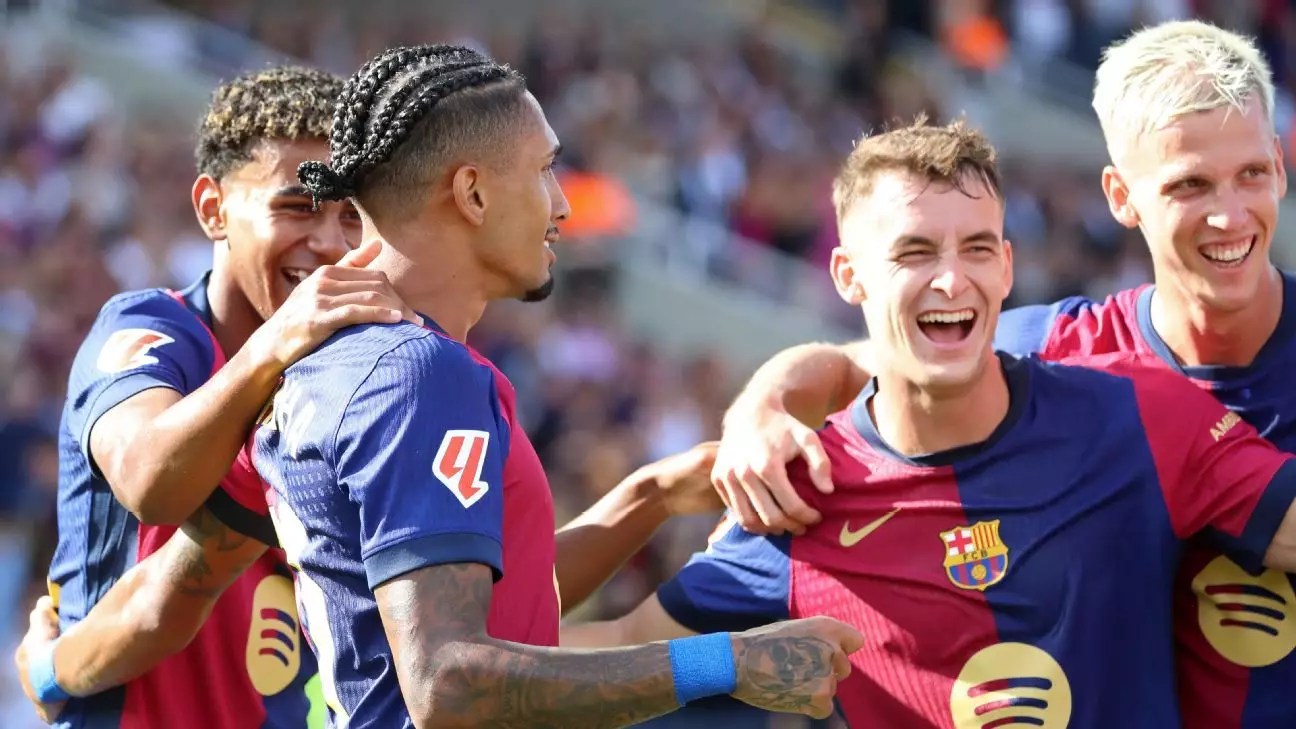The financial landscape of FC Barcelona has seen a notable transformation following LaLiga’s recent announcement regarding the club’s spending limit. The Catalan giants, once facing dire financial constraints, now have a spending cap of €426 million ($470.1 million), a remarkable recovery from the mere €204 million they were allocated at the beginning of the year. This increase, while still below the threshold they require for unrestrained activity in the transfer market, signals a pivotal moment in their journey towards financial stability and competitive resurgence.
Real Madrid remains the dominant force financially within LaLiga, boasting a staggering spending limit of €754 million. However, Barcelona’s improved limit places them in a competitive second position, surpassing Atlético Madrid’s cap of €310 million. This change not only showcases Barça’s resurgence but also highlights the contrasting fortunes of other clubs within the league. For instance, Sevilla and Espanyol face dire fiscal realities, with their limits slashed to €2.5 million and €8.8 million, respectively. Such constraints indicate the precarious situation these clubs find themselves in, necessitating significant cuts before they can consider strengthening their squads.
The way spending limits are determined is quite intricate, revolving around a formula that accounts for a club’s revenue, non-sporting expenses, and debt obligations. As Gómez explained, the limit essentially dictates how much clubs can allocate to wages, bonuses, and amortization associated with player transfers. Barcelona has, unfortunately, been in breach of this limit in previous seasons, necessitating a cautious approach with player registrations and acquisitions.
Barcelona’s path to financial recovery has been characterized by strategic maneuvers aimed at increasing their revenue while simultaneously slashing expenses. LaLiga officials, including president Javier Tebas, have commended the club for its significant efforts in improving its finances. They noted that, despite ongoing challenges, Barça has managed to streamline its operations effectively, promising a more sustainable financial future.
Controversies surrounding spending remain a point of contention, with Gómez revealing that Barcelona’s current excess over the limit is estimated to be around €60 million. This ongoing deficit must be addressed if the club aims to fully capitalize on their increased spending capacity. Nonetheless, positive talks between Barcelona and kit supplier Nike suggest potential avenues to realign their financials. If negotiations progress successfully, the club might soon comply with LaLiga’s spending framework, enabling them to invest at a level that reflects their historical stature in the league.
The financial restructuring within Barcelona not only affects the club itself but also has broader implications for the dynamics of LaLiga. The league’s model has seen clubs grappling with fiscal responsibility while attempting to remain competitive. The disparity in spending caps among clubs is a clear indicator of varying wealth levels within the league, emphasizing the importance of financial management in football. For Barcelona, this instance serves as a warning and a lesson on the risks of overspending linked to unsustainable business practices, urging other clubs to adopt a more prudent approach to their finances.
Moreover, with clubs like Real Sociedad and Villarreal also navigating through the financial turmoil, the improved situation for Barcelona serves as a glimmer of hope that a path to fiscal success is possible. The rise of Girona, who have seen their limit increase to €94 million after a Champions League qualification, exemplifies this trend of upward mobility contingent upon smart management and sporting success.
FC Barcelona’s improved financial situation marks a significant turning point for the club, offering a chance to regain its competitive edge in LaLiga. While still facing challenges, the adjustments made thus far provide a foundation for more financial freedom and a refreshed approach to player acquisitions. As the club continues to negotiate its hurdles, it remains to be seen whether they can reclaim their position at the summit of Spanish football, not just in terms of accolades, but also in financial health. The road ahead is paved with opportunities and challenges alike, and the responses of both Barcelona and their LaLiga counterparts will undoubtedly shape the future of Spanish football.


Leave a Reply